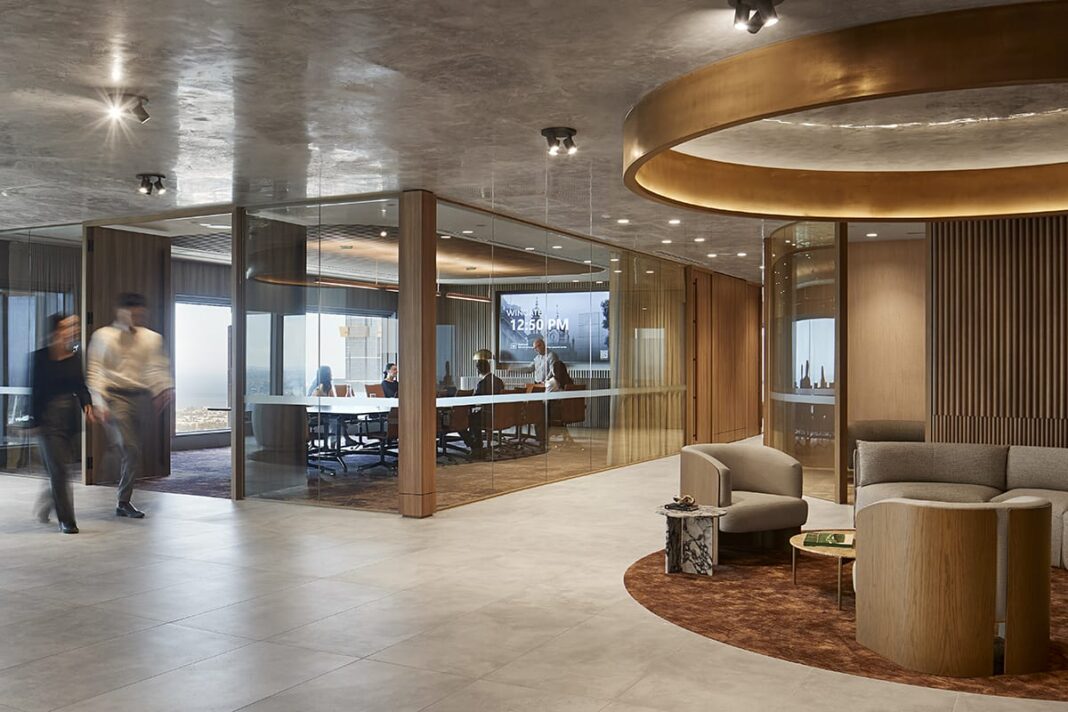In today’s fast-paced corporate landscape, workplace design plays a crucial role in influencing employee morale and productivity. A well-designed workspace not only enhances aesthetic appeal but also fosters creativity, collaboration, and overall well-being. This article explores innovative workplace design ideas that can significantly boost employee morale and create a positive work environment.
The Importance of Workplace Design
Why Workplace Design Matters
Workplace design is more than just creating a visually appealing environment; it directly impacts employee satisfaction and productivity. Research shows that a thoughtfully designed workspace can lead to:
- Increased Productivity: Employees are more productive in spaces that promote focus and reduce distractions.
- Enhanced Collaboration: Open and flexible spaces encourage teamwork and communication among employees.
- Higher Employee Retention: A pleasant work environment contributes to employee loyalty and reduces turnover rates.
The Connection Between Design and Morale
Employee morale is influenced by various factors, including workplace design. A well-designed space can:
- Create a sense of belonging and community.
- Provide comfort and functionality.
- Inspire creativity and innovation.
Innovative Workplace Design Ideas
1. Flexible Workspaces
Embracing Flexibility
Flexible workspaces are increasingly popular, allowing employees to choose where and how they work. This can include:
- Hot Desking: Encouraging employees to choose their desks based on availability and preference.
- Collaborative Zones: Designating areas for team meetings and brainstorming sessions, equipped with comfortable seating and technology.
Benefits of Flexible Workspaces
- Increased Autonomy: Employees feel empowered to select their working environment, leading to higher job satisfaction.
- Enhanced Collaboration: Collaborative spaces foster teamwork and communication, improving overall productivity.
2. Biophilic Design
Integrating Nature into the Workspace
Biophilic design emphasizes the connection between nature and the built environment. This can be achieved by:
- Incorporating Plants: Adding greenery can improve air quality and create a calming atmosphere.
- Natural Light: Maximizing natural light through large windows or skylights enhances mood and reduces eye strain.
Benefits of Biophilic Design
- Improved Well-Being: Exposure to natural elements has been linked to reduced stress and increased focus.
- Enhanced Creativity: A connection to nature can inspire creativity and innovative thinking.
3. Personalized Workspaces
Allowing Personalization
Encouraging employees to personalize their workspaces can enhance their connection to the environment. This can include:
- Personal Decor: Allowing employees to add personal items like photos or artwork.
- Adjustable Furniture: Providing ergonomic furniture that can be customized for comfort.
Benefits of Personalization
- Increased Ownership: When employees feel they have control over their space, they are more likely to take pride in their work.
- Boosted Morale: Personal touches can create a sense of belonging and happiness.
4. Wellness Areas
Creating Spaces for Relaxation
Wellness areas are dedicated spaces that promote mental and physical well-being. These can include:
- Quiet Zones: Designated areas for relaxation and mindfulness activities, complete with comfortable seating and calming decor.
- Fitness Facilities: Incorporating gym facilities or spaces for physical activities can encourage employees to stay active.
Benefits of Wellness Areas
- Reduced Stress: Access to relaxation spaces helps employees manage stress levels.
- Improved Health: Encouraging physical activity can lead to healthier employees and reduced healthcare costs.
5. Collaborative Spaces
Fostering Teamwork and Creativity
Collaborative spaces are designed to promote teamwork and innovation. Key features can include:
- Open Layouts: Removing physical barriers encourages communication and idea sharing.
- Technology Integration: Providing tech tools such as smart boards and video conferencing systems enhances collaboration.
Benefits of Collaborative Spaces
- Enhanced Creativity: Team-oriented environments foster brainstorming and creative problem-solving.
- Stronger Relationships: Increased interaction among employees builds camaraderie and team spirit.
6. Color Psychology
Using Colors to Influence Mood
Colors have a profound impact on emotions and behavior. Thoughtfully selecting colors in workplace design can:
- Promote Calmness: Soft blues and greens create a calming effect, reducing stress.
- Enhance Energy: Bright colors like yellow and orange can stimulate creativity and energy.
Benefits of Color Psychology
- Improved Focus: The right color palette can help employees concentrate and stay motivated.
- Increased Morale: A vibrant and appealing color scheme contributes to a positive work atmosphere.
7. Technology Integration
Smart Workspaces
Incorporating technology into workplace design can streamline processes and enhance the employee experience. Key elements include:
- Smart Desks: Desks equipped with charging stations and integrated technology improve convenience.
- Virtual Collaboration Tools: Technology that supports remote collaboration fosters connectivity among teams.
Benefits of Technology Integration
- Increased Efficiency: Technology simplifies workflows and enhances productivity.
- Enhanced Communication: Tools that facilitate communication lead to better teamwork and project outcomes.
Frequently Asked Questions (FAQs)
1. How does workplace design impact employee morale?
Workplace design influences employee morale by creating a comfortable, functional, and visually appealing environment that enhances satisfaction and productivity.
2. What are some cost-effective workplace design ideas?
Cost-effective ideas include flexible workspaces, incorporating plants, and utilizing existing furniture creatively to create a more engaging environment.
3. How can biophilic design be implemented in an office?
Biophilic design can be implemented by adding plants, maximizing natural light, and creating outdoor spaces for employees to enjoy.
4. What are wellness areas, and why are they important?
Wellness areas are designated spaces that promote mental and physical well-being, providing employees with relaxation options that reduce stress and improve health.
5. How can companies encourage personalization in workspaces?
Companies can encourage personalization by allowing employees to decorate their workspaces and providing adjustable furniture to meet individual comfort needs.
Conclusion
Innovative workplace design ideas can significantly boost employee morale, enhance productivity, and foster a positive corporate culture. By embracing flexibility, integrating nature, allowing personalization, and creating collaborative spaces, businesses can cultivate an environment where employees thrive. Investing in thoughtful workplace design is not just a trend but a strategic move toward a more engaged and motivated workforce.


